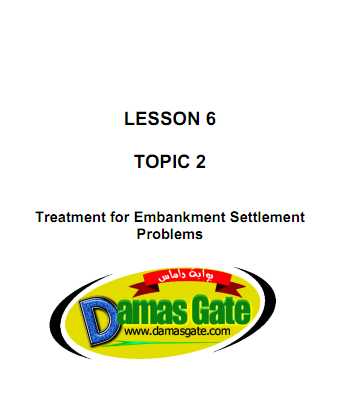Treatment for Embankment Settlement Problems

Explain the surcharge concept. Stress that the increased load placed on the soil does not change the drainage properties of the soil deposit. However a percentage of the total settlement will occur within a given time frame for a given soil deposit. Therefore if an increased load is applied, an amount of settlement equal to the settlement under the original load will occur in a shorter time. Note that a surcharge must be removed when the planned settlement has occurred.
Surcharge case history. This is a surcharge placed on the Salt Lake City I-15 project. Note that the lateral extent of the surcharge was maximized by using a soil reinforcement system to build the surcharge with a vertical face. Also note that a relatively high embankment was being surcharged at this location. The design attempted to maximize the surcharge height as the relative proportion of surcharge load was small compared to the total embankment load.
Show vertical drain concept. Note that drains are most effective for wide embankments over deep clay layers. Explain the process of first constructing a permeable drainage layer over the original ground to allow the discharge to flow out to the sides of the fill. The spacing is designed based on the type of drain and the soil properties. The drains are installed by a variety of equipment depending on drain type and soil conditions. The water flow from the drains is caused by the pressure induced in the pore water by the embankment load.
Download
*